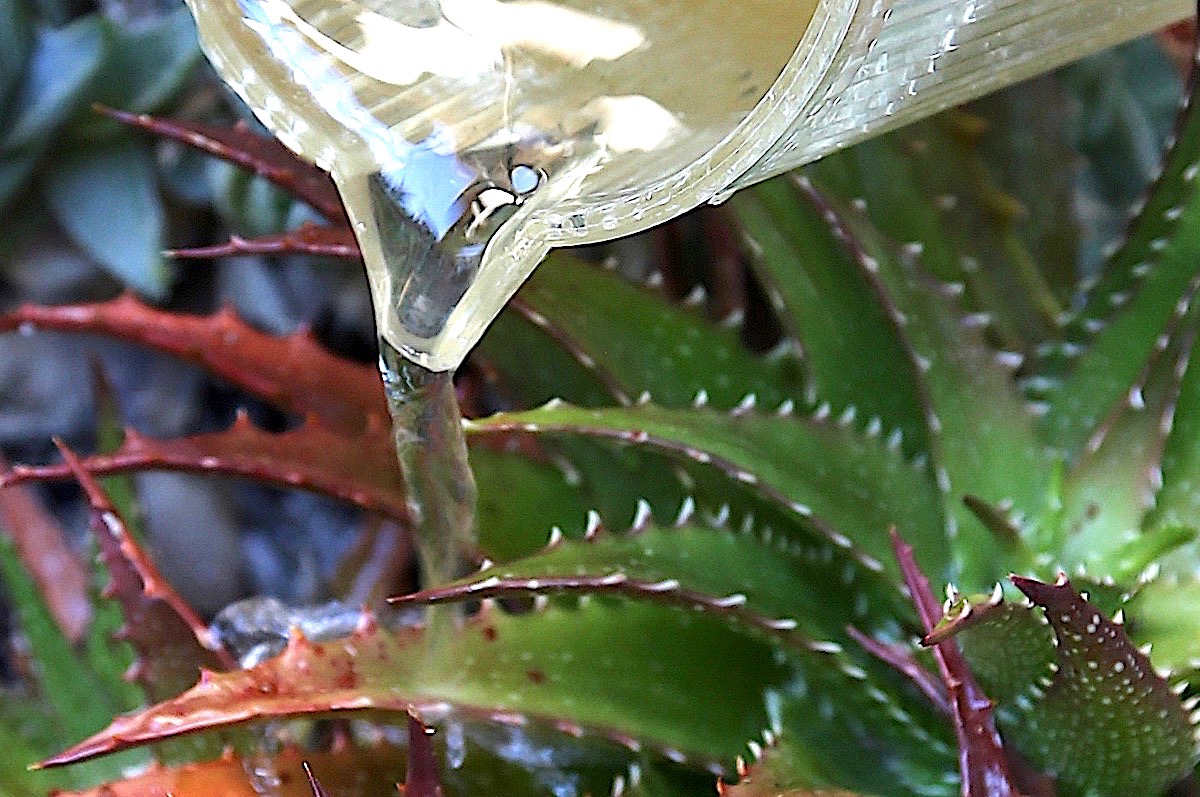
Succulent Spring Feeding
The best times to feed (fertilize) your succulents are in spring when daytime temps stay above 60 degrees F; and again in autumn or winter, right before a rainstorm. Note: Growers fertilize plants more often to promote faster growth.
What if I don’t feed my succulents?
It doesn't much matter. They'll likely grow faster and larger if you do, but that may not be what you want. Tender new growth is more prone to wind damage, sun- and frost-burn, and may require trimming you hadn't anticipated. I don't recommend fertilizing succulents that you want to keep small and compact, like those in terrariums and wreaths.
What do I use as fertilizer?
Potted succulents: A light feeding of manure tea, fish emulsion, or an all-purpose granulated fertilizer help succulents grow lush and lovely. Dilute liquid fertilizers half-and-half with water.
At potting time, mix a slow-release granular fertilizer into the soil. I learned this from a friend whose collection invariably looks amazing. That said, your plants will be fine without it. (Of course, "fine" isn't the same as "glorious.")
In-ground succulents: In spring (if you want to, it's not essential), apply a balanced granular fertilizer. In autumn or winter, promote lush growth the following spring by applying Ironite per package directions. Take care not to spill it on hardscape---it'll leave rusty stains.
How do I apply fertilizer to my succulents?
Unless it's been raining, water plants before feeding them to spread fertilizer more evenly.
I mix liquid fertilizer (like fish emulsion) half-and-half with water in a watering can or bucket, then pour the dilute liquid fertilizer onto a pot's soil until the solution begins to run out the hole in the bottom.
If plant growth completely covers the top of the pot, set the pot in a pie pan or pot saucer and add the solution to the shallow container. It'll wick up into the soil through the pot's hole.
In the garden, spread granular fertilizer per package directions and water it in. I wear disposable plastic gloves, reach into the bag, grab a handful, and toss it onto the ground above where roots likely are. Then I spray the area with a hose.
What kind of granular fertilizer should I use?
The brand doesn't matter---I prefer organic---but the ratio of N (nitrogen), P (phosphorous) and K (potassium) ideally should be equal. Labels typically read "all purpose granular plant food" (or "all purpose fertilizer") and show three numbers that are the same: "10-10-10" or "triple 15."
How much fertilizer do succulents need?
Remember, they can get by, even in nutrient-poor soils, without it. Succulents in pots need feeding more than in-ground plants do, because roots access a limited amount of soil.
Slow release granules (add to soil at potting time): Three tablespoons (one capful) of Osmocote Plus per 2-gallon pot. Mix into the top 1 to 3 inches of soil.
Liquid fertilizer (pots): Give about half the concentration of the dose recommended on the package. (i.e. dilute to half strength.)
Granular (in the garden): Spread lightly according to package directions and water-in well.
Is it OK to fertilize more frequently?
That's what many commercial growers do. A little bit of fertilizer with every watering promotes rapid growth. However, such plants are considered "soft" (a nursery term) rather than "hard," meaning tough. It's a trade-off. I grow my in-ground succulents hard to help them endure the challenges of being in the open garden, as opposed to a nursery or greenhouse.
Does soil make a difference?
Yes. Soils vary from region to region and even within a garden. The best way to know what your soil lacks is to have it tested. But it's common sense that succulents growing in, say, oak leaf mulch are getting ample nutrients and don't need fertilizing; those that have been in pots for years or growing in decomposed granite will likely appreciate it.
You can improve the nutrient content of your soil by mulching (ideally in fall, before winter rains) with compost.
Related info on this site: Discover the best soil and amendments for succulents. See my video:
Links are affiliate.
